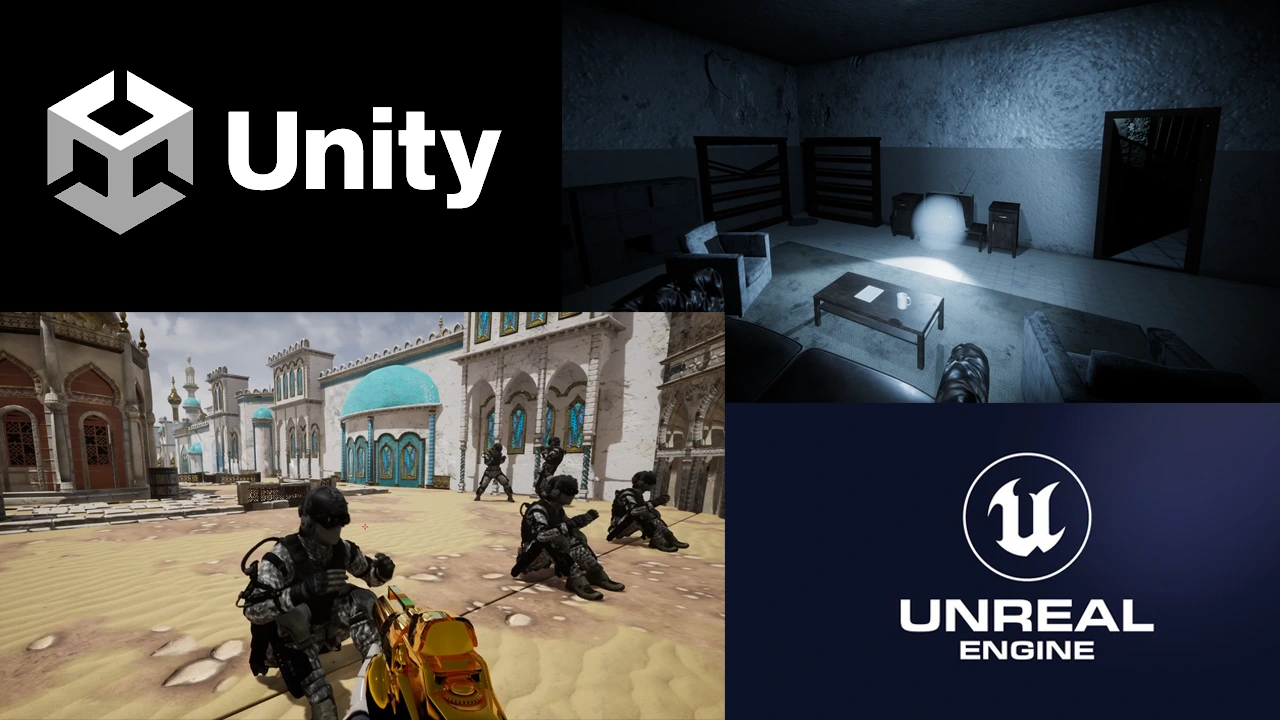Virtual Environments

During my academic training, I developed two virtual environments using Unity and Unreal Engine. Both scenes were fully explorable and included a variety of custom and third-party assets, such as 3D models, sound effects, particle systems, different types of textures, dynamic lighting, and animated elements. These projects served as a foundation for experimenting with level design techniques, environmental storytelling, and the creation of immersive experiences.
Unity Environment
In Unity, I developed a first-person horror virtual environment alongside two classmates. The experience begins with the player waking up on a deserted coast after a shipwreck. While exploring the area, they discover a mysterious ruined building that appears to have been used for experiments. Soon, paranormal phenomena and unsettling events make it clear that the player must find a way to escape as quickly as possible.
Throughout the experience, the player faces terrifying creatures, disturbing sounds, and unexpected events designed to generate psychological tension. To progress, they must carefully explore the building to find keys that unlock doors and new areas.
We focused on creating a dark and eerie atmosphere, using minimal lighting, immersive sound effects, and event triggers to evoke fear and enhance the sense of immersion.
Unreal Engine Environment
This project involved the development of a map in Unreal Engine as part of a course assignment, aimed at applying the knowledge gained during the class. In the environment, I implemented particle systems, lighting, integration of animated models, sound, and texturing of some objects distributed throughout the map.
The building and character models were sourced from third parties; my work focused on the design and construction of the overall map layout.
Inspired by my interest in first-person shooter games, I chose to design a map with a style similar to that of Counter-Strike.